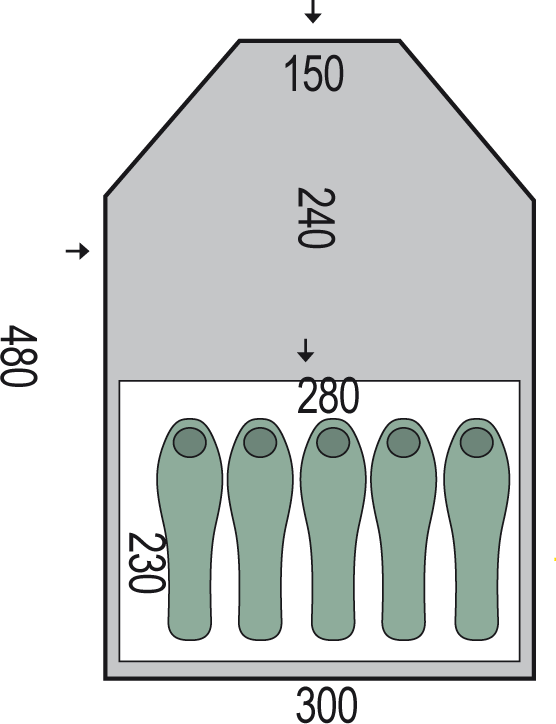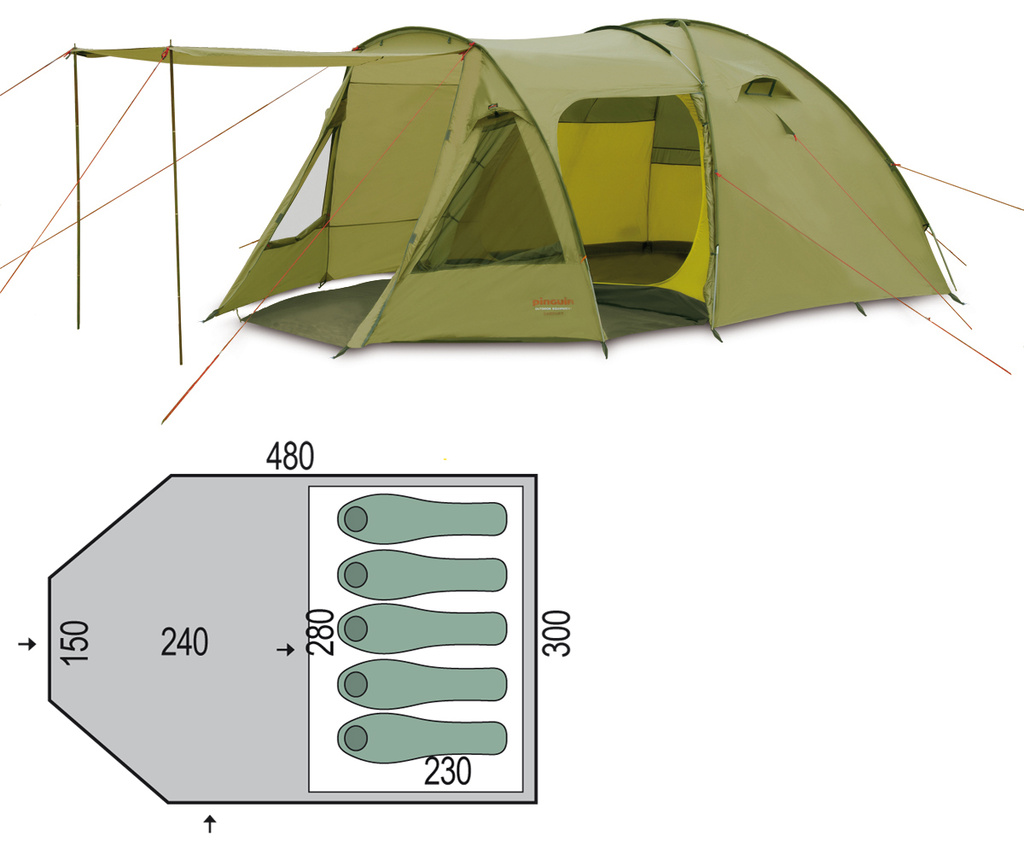Campus 5 Duralu
Main advantages
Used materials
Lightweight, very strong and flexible thin-walled rods made of stainless duralumin alloy, resistant to high loads in the mountains. Precise design and surface finish minimise the risk of punctures.
Lightweight and solid polyester flysheet fabric has high resistance to UV, does not age and retains its properties during prolonged exposure to sunlight and heat
PU coating
It is a thin waterproof polyurethane layer applied several times on the inside of the tropic.Depending on the number of layers of coating, the tropic is resistant to water pressure up to 4000mm (Extreme and Hiking series), 3000mm (Trekking and Family series) and 2500mm (Outdoor series). The coating retains its elasticity even at very low temperatures well below freezing.
Detailed Description
Campus 5 Duralu
A Campus 5 Duraluspacious tent with a wide choice of entrances and a large vestibule that retains the advantage of small tents - quick and easy to erect.
The flysheet is made of Polyester with a polyurethane coating, guaranteeing a water column of 4,000 mm. The seams have waterproof tape.
The groundsheet is made of Nylon with a Polyurethane coating giving a water column of 10,000 mm.
The poles are made up of duralumin (7001) segments with a diameter of 13 mm (main poles and awning supports) and 8 mm (brace above the entrance to the inner tent).

Technical specification
| features: | |
| Weight | 10.5 kg |
| Weight without inner tent | 8.3 kg |
| Package Size | ⌀28 x 67 cm |
| Number of people | 5+ |
| Amount of enterances | 2 |
| Construction type | Cupola |
| Amount of vents | 5 |
| Number of poles / crossing points | 4 / 1 |
| Buildable without a bedroom | Yes |
| Height of tent (bedroom) | 200 (190) cm |
| Siliconised | No |
| Taped seams | Yes |
| Number of pins | 27 |
| Category | Family |
| Material | |
| Material of poles | Dural 7001 T6 |
| Pole diameter | 13 mm |
| Flysheet material | Polyester, PU coating 4 000mm H2O |
| Groundsheet material | Nylon, PU coating 10 000mm H2O |

Description
The tent is double-skinned consisting of an inner tent and flysheet. The inner tent has a rectangular floor plan with one entrance on its longer side. The flysheet forms a large vestibule that can be entered through two different entrances.
Tent concept
This is based on the principle of a pole structure threaded through sleeves made of perforated material on outside of the flysheet. The flysheet and inner tent (which is suspended under the flysheet) are erected at the same time after threading the poles through the sleeves. The advantage of this method is that the inner tent can be detached from the flysheet and the flysheet can then be erected separately to create a single-skin tent without a groundsheet.
Ventilation
There is a vent at the top of the flysheet dome. Vent covers are designed so they are not affected by the wind. This prevents leaks during rain with strong winds.
Pitching the tent
Thread the poles through the perforated sleeves on the outside of the flysheet and insert the ends of the poles into the brass eyelets on the straps on the bottom edge of the flysheet. Then fasten the buckles on the straps near the ground inside the tent and the flysheet will stand. The inner tent is attached to the loops on the inside of the flysheet. Anchor the erected tent with pegs and guy ropes and tighten with the plastic buckles.







